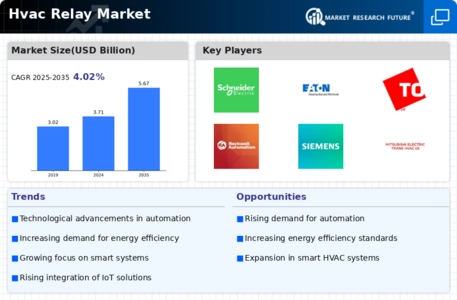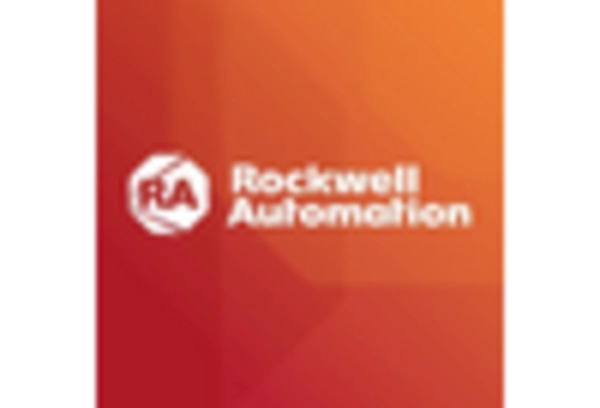Market Growth Projections
The Global Hvac Relay Market Industry is projected to experience robust growth in the coming years. With a market valuation of 3.71 USD Billion anticipated in 2024, the industry is expected to expand at a compound annual growth rate of 3.94% from 2025 to 2035. By 2035, the market is forecasted to reach 5.67 USD Billion, reflecting the increasing adoption of advanced HVAC technologies and the rising demand for energy-efficient solutions. This growth trajectory indicates a strong market potential, driven by various factors including technological advancements, regulatory support, and heightened consumer awareness.
Rising Demand for Energy Efficiency
The Global Hvac Relay Market Industry experiences a notable surge in demand for energy-efficient solutions. As governments worldwide implement stricter energy regulations, manufacturers are compelled to innovate and enhance the efficiency of HVAC systems. This trend is evident in the growing adoption of smart HVAC technologies that utilize advanced relays to optimize energy consumption. For instance, the integration of relays in smart thermostats allows for precise control of heating and cooling, thereby reducing energy waste. This shift towards energy efficiency is projected to contribute significantly to the market, with a valuation expected to reach 3.71 USD Billion in 2024.
Growing Awareness of Indoor Air Quality
The Global Hvac Relay Market Industry is also propelled by the growing awareness of indoor air quality. As consumers become more conscious of the health implications associated with poor air quality, there is an increasing demand for HVAC systems that ensure optimal air circulation and filtration. Relays play a crucial role in these systems by enabling precise control over ventilation and air purification processes. For instance, advanced relays can adjust airflow based on real-time air quality data, enhancing the overall effectiveness of HVAC systems. This heightened focus on indoor air quality is likely to contribute to sustained market growth in the coming years.
Technological Advancements in HVAC Systems
Technological advancements play a pivotal role in shaping the Global Hvac Relay Market Industry. The introduction of IoT-enabled HVAC systems has revolutionized how relays function within these setups. These systems allow for remote monitoring and control, enhancing operational efficiency and user convenience. For example, smart relays can communicate with other devices, adjusting settings based on real-time data. This innovation not only improves system performance but also aligns with the growing consumer preference for automation and connectivity. As these technologies continue to evolve, they are likely to drive market growth, with projections indicating a market size of 5.67 USD Billion by 2035.
Regulatory Support for Sustainable Practices
Regulatory support for sustainable practices is a key driver of the Global Hvac Relay Market Industry. Governments are increasingly promoting regulations that encourage the use of environmentally friendly technologies in HVAC systems. This includes incentives for manufacturers to develop relays that minimize energy consumption and reduce greenhouse gas emissions. For example, various countries have established standards that require the integration of energy-efficient components in HVAC systems. Such regulatory frameworks not only foster innovation but also create a favorable environment for market expansion, as manufacturers align their products with these sustainability goals.
Increasing Urbanization and Infrastructure Development
The Global Hvac Relay Market Industry is significantly influenced by increasing urbanization and infrastructure development. Rapid urban growth leads to a higher demand for residential and commercial buildings, necessitating efficient HVAC systems. As cities expand, the need for reliable climate control solutions becomes paramount, driving the adoption of advanced relays in HVAC systems. For instance, new construction projects often incorporate energy-efficient HVAC technologies, which rely on sophisticated relay systems to manage heating and cooling effectively. This trend is expected to sustain market growth, as urban areas continue to develop and modernize their infrastructure.

















Leave a Comment